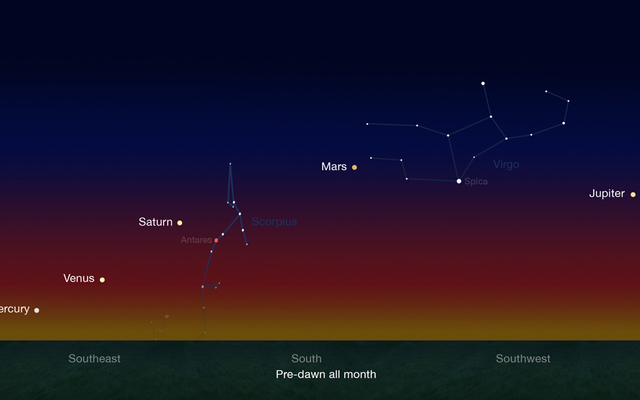-
Tips for becoming a good boxer - November 6, 2020
-
7 expert tips for making your hens night a memorable one - November 6, 2020
-
5 reasons to host your Christmas party on a cruise boat - November 6, 2020
-
What to do when you’re charged with a crime - November 6, 2020
-
Should you get one or multiple dogs? Here’s all you need to know - November 3, 2020
-
A Guide: How to Build Your Very Own Magic Mirror - February 14, 2019
-
Our Top Inspirational Baseball Stars - November 24, 2018
-
Five Tech Tools That Will Help You Turn Your Blog into a Business - November 24, 2018
-
How to Indulge on Vacation without Expanding Your Waist - November 9, 2018
-
5 Strategies for Businesses to Appeal to Today’s Increasingly Mobile-Crazed Customers - November 9, 2018
See big 5 planets align in the sky with your little eye
Venus, the brightest of all the visible planets, will appear to the upper right of Mercury.
Advertisement
“It’s not super-often you get to see them all at the same time in the sky, it’s like seeing all of your friends at once”, said astronomer Jackie Faherty of the American Museum of Natural History.
It is the first time in at least 10 years that the five planets can be seen with naked eye at the same time.
The five bright planets will be aligned diagonally, stretching from low in the east to higher in the north. According to Phys.org, Jupiter can be seen in the north, followed by Mars, then Saturn and Venus.
“You’ll see Mercury low in the southeast and then the rest of the planets will form a line, a kind of arc going across the southern sky and will end with Jupiter over in the southwest”, she said.
According to astronomers, the planetary alignment will technically last for 30 days – January 20 to February 20 – but because Mercury will be the most hard to spot, it is advisable that if you want to view the five planets the best days will be last few days of January and first few of February. The solar system itself hasn’t changed-it’s just that the timing of the planets orbiting the sun puts them into a lineup that makes for good viewing by Earthlings. Jupiter and Venus will shine the brightest, but all of the planets can be differentiated from stars by the fact that they do not appear to flicker. “There they are, the other rocks or balls of gas that are running around the sun”. Mars is visible at about 1 a.m. and is the slightly-red dot between Venus and Jupiter at dawn. If it quickly blinks out, it’s a distant star.
Advertisement
Mercury is rising higher each night, and is expected to be easier to be seen around 5th or 6th of February, when it will be at farthest from the sun from our perspective. The next chance after that is not until 2020.




























